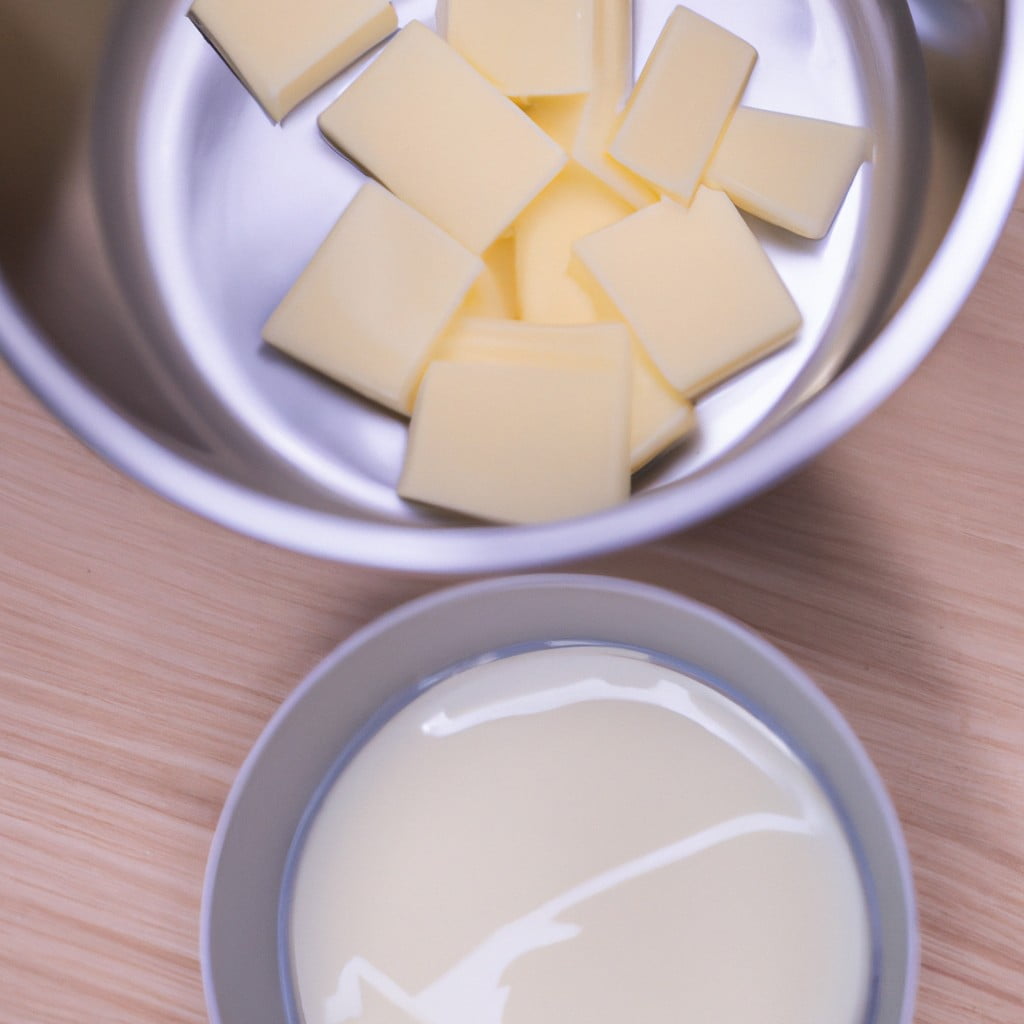Master the art of melting white chocolate flawlessly with this comprehensive guide.
Key takeaways:
- Use the double-boiler method for smooth white chocolate.
- Melt white chocolate in the microwave using short bursts.
- Fix seized white chocolate with warm melted cocoa butter or oil.
- White chocolate melts at 110°F (43°C) and softens at 86°F (30°C).
- Buy high-quality white melting chocolate from specialty stores and online retailers.
Inside
Using the Double-Boiler Method

To use the double-boiler method effectively, fill the bottom pot with about an inch of water and bring it to a simmer, not a full boil. Place a heat-proof bowl snugly on top of the pot, ensuring the bottom doesn’t touch the water, as direct heat can scorch white chocolate. Chop the chocolate into even, small pieces for consistent melting. Stir gently with a heat-proof spatula as it begins to liquefy, ensuring even heating and preventing overheating.
Melting white chocolate requires patience and low heat. If the bowl becomes too hot, momentarily lift it away from the steam to control the temperature. Once smooth and creamy, remove the bowl from the heat, wiping the bottom to avoid water droplets mixing with the chocolate, which can cause it to seize.
How to Melt White Chocolate in a Microwave
To melt white chocolate in the microwave, start with a microwave-safe bowl and chop the chocolate into uniform pieces to ensure even melting.
Microwave at half-power or on a defrost setting to prevent overheating, as white chocolate can burn easily due to its high sugar content.
Heat in short bursts of 15-20 seconds, stirring well after each interval to distribute the heat.
Continue this process until most, but not all, of the chocolate is melted.
The residual heat will melt the remaining pieces as you stir, resulting in a smooth, creamy consistency perfect for your recipe.
If needed, you can heat for additional 5-second bursts, but proceed with caution to avoid scorching the chocolate.
How Can You Fix Seized White Chocolate?
If your white chocolate has become lumpy or grainy—commonly referred to as “seizure”—do not despair. Seizure typically occurs when moisture is introduced or when chocolate is overheated. However, it can often be remedied with the careful addition of fat. Stir in a small amount of warm, melted cocoa butter or a neutral oil such as vegetable or canola, a teaspoon at a time. This can help reestablish the smooth consistency of the chocolate, making it suitable for use in your recipe. Remember, patience and gentle heat are the best approach to avoid further seizing.
For white chocolate that has only slightly seized, warming it gently over a bowl of warm water while stirring slowly may coax it back to a smooth state. Avoid exposing the chocolate to direct heat, and continuously stir to encourage even melting. If these methods fail to produce a smooth texture, the chocolate can still be used in recipes such as brownies or cookies where it will be melted within the batter. Always ensure that any salvage efforts are conducted away from direct heat and with minimum moisture exposure.
What Is the Melting Point of White Chocolate?
White chocolate melts at approximately 110°F (43°C) but can start to soften at as low as 86°F (30°C).
This lower melting point compared to dark or milk chocolate is due to the higher content of cocoa butter.
Ensuring a gentle heat when melting white chocolate is crucial to prevent it from burning or seizing.
It’s worth noting that high-quality white chocolate, which contains more cocoa butter and less sugar, may require more careful handling to melt smoothly.
Always use indirect heat and monitor the temperature closely for the best results.
Where Can You Buy the Best White Melting Chocolate?
Selecting high-quality white melting chocolate is paramount for any chocolate crafting endeavor. Specialty baking stores typically offer a range of premium white chocolate brands known for their superior melting qualities. Brands like Callebaut, Valrhona, and Ghirardelli are notable for their smooth consistency and rich flavor profiles, making them a favorite among professional chocolatiers.
For convenience, craft stores and supermarkets often stock melting wafers specifically designed for ease of use. These are available from brands like Wilton and Merckens and are ideal for coating and candy making due to their stable melting properties.
Online retailers provide a broad spectrum, including organic and fair-trade options for those seeking ethical sourcing. Websites like Amazon, Chocosphere, and World Wide Chocolate are excellent resources offering detailed product descriptions and customer reviews, aiding in informed purchasing decisions.
Exploring local artisan chocolate shops can yield bespoke white chocolate options, often handcrafted with unique cocoa butter ratios that cater to specific melting and molding needs, providing an opportunity to support small businesses.
When purchasing, consider the ingredients list; a higher cocoa butter content indicates a smoother melt, while the presence of vegetable fats may compromise quality. Always check the freshness for optimum melting results, as older chocolate can become harder to work with.
Related
- How to Melt White Chocolate Chips: Simple Steps for Smooth Results
- How to Melt Chocolate: Quick and Easy Steps for Perfect Results
- How to Melt Chocolate Chips: Straightforward Steps and Tips
- How to Melt Chocolate in Microwave: Quick & Easy Steps
- Dipping Chocolate: How to Perfectly Melt and Use for Desserts